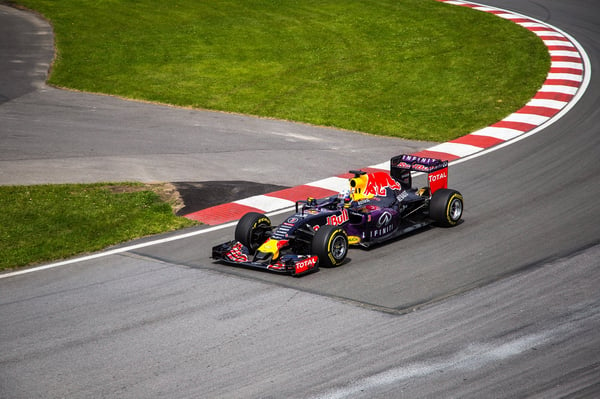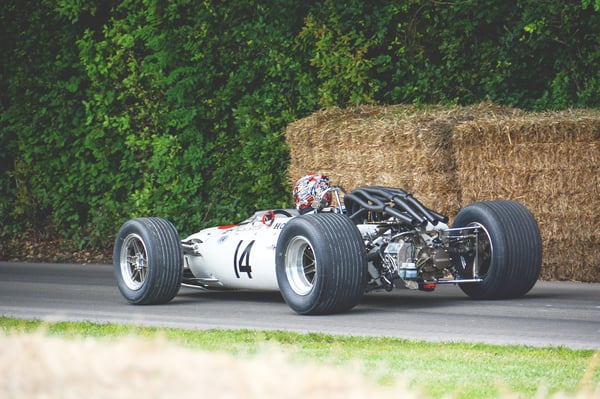For many Americans, March means “madness,” that is the conclusion to the college basketball season. But for many others, and fans around the world, March also brings with it the opening of the Formula One racing season.
As engineers, we marvel at the technology and techniques that go into optimizing the peak performance of vehicles operating at the highest level. Unlike consumer vehicles, which are designed and engineered to strike the optimum balance between performance and durability, vehicles that compete in racing circuits are designed and engineered with an emphasis on maximum performance over very short lifetimes — it’s not suboptimal, in other words, the vehicle could fall apart moments after crossing the finish line (especially if it wins!).
That said, much of the same sophisticated technology that is used by modern engineers to maximize performance of racing vehicles is used to optimize the performance of the cars we drive every day — and vice versa.
Testing the Limits
One of the inherent problems in designing a vehicle to win a race is that you end up sacrificing some features that you wouldn’t dream of foregoing in consumer vehicles. The goal is to drop weight and mass, which can expose some critical components to thermal vulnerabilities (on vehicles operating at full loads, keep in mind). In the end, the manufacturers of these race cars incur some risk, knowing that the offset is better performance (and more lucrative earnings and sponsorships).
The results are predictable. You’ve seen the fires on televised races. Brakes that are thermally compromised frequently fail. Engines overheat. And so on. A bit of this is baked into the recipe of creating the ultimate racing machine.
But how much is baked in is under greater control, thanks to sophisticated simulation technology that allows engineers to better predict — and account for — the limits that components will be able to endure.

Race track simulation is a rapidly maturing methodology used to evaluate thermal performance of components during a race...actually, before that race. Using virtual simulation, engineers can monitor components during transient driving conditions that are vulnerable to high temperatures and pinpoint when components exceed temperature limits.
When designing our road-worthy consumer vehicles, designers can employ convection or conduction materials or techniques (fans, heat shields, cooling systems, e.g.) to protect them. But in designing race cars, you can’t afford to add the extra weight. Perhaps a designer of a competitive vehicle, then, will look at ways to better direct natural airflow. But they also don’t want to sacrifice aerodynamics, either.
The trade-offs are everywhere. Pinpointing the optimal design characteristics is critical. Which is why this is becoming much more of a science than an art.
When Winning is Everything
Simulating real-world, transient racing conditions means even more than merely accounting for durability of components during a race...or safety...or even the thermal comfort of the driver.
It’s about the bottom line — winning.
ThermoAnalytics published a performance vehicle study on how temperatures influence vehicle aerodynamics. This study highlighted how high-performance vehicles operating at lower speeds — say, braking events, or accelerating out of corners — produce temperatures that negatively impact downforce, a critical factor in aerodynamics. Not accounting for these thermal effects on performance will have racing teams over-predicting performance and under-predicting lap times.

And a small variance makes a huge difference. Miscalculations of this kind on a scale of only 3-5% can mean the difference between winning and not even showing. On the track, millimeters are miles. And the research cited above demonstrates that you can have the fastest vehicles and the most accomplished drivers and still forfeit all of that advantage simply because an engineer misappropriated the necessary heat shielding.
Simulating Optimal Performance in the Real World — Anywhere in the Real World
The sophistication of modern thermal modeling and simulation software can reveal these inefficiencies in the virtual realm, so engineers don’t have to test them in the real world or lament them in the racing world. And simulation can perform these evaluations for all race tracks, anywhere in the world, without ever leaving the simulation environment. Simulation enables the optimization of vehicle thermal aerodynamics for any race in the calendar.
And, optimally, simulation does this faster, with fewer resources, more reliably than traditional test-track methodologies.
And when millimeters are miles, time, weight and cost are everything.
Please don't hesitate to reach out to us if you are interested in learning more about how temperatures influence vehicle aerodynamics or if you are interested in learning about TAITherm or any of our other products.
